Berkeley, CA Pollen and Allergy Report for Summer 2023
Pollen Allergy Trends in Berkeley, CA
When is pollen lowest in Berkeley, CA?

February
Lowest month total PPM
Avg. PPM
When is pollen highest in Berkeley, CA?

April
Highest month total PPM
Avg. PPM
How does pollen in Berkeley, CA compare to California?
Berkeley has a lower average PPM than the state of California.
Berkeley yearly avg PPM:
California yearly avg PPM:
How does pollen in Berkeley, CA compare to the USA?
Berkeley has a lower average PPM than the USA.
Berkeley yearly avg PPM:
USA yearly avg PPM:
Is pollen worse this year in Berkeley, CA?
Spring 2023 was worse than spring 2022.
Spring 2023 PPM:
Spring 2022 PPM:
Average PPM in Berkeley, CA
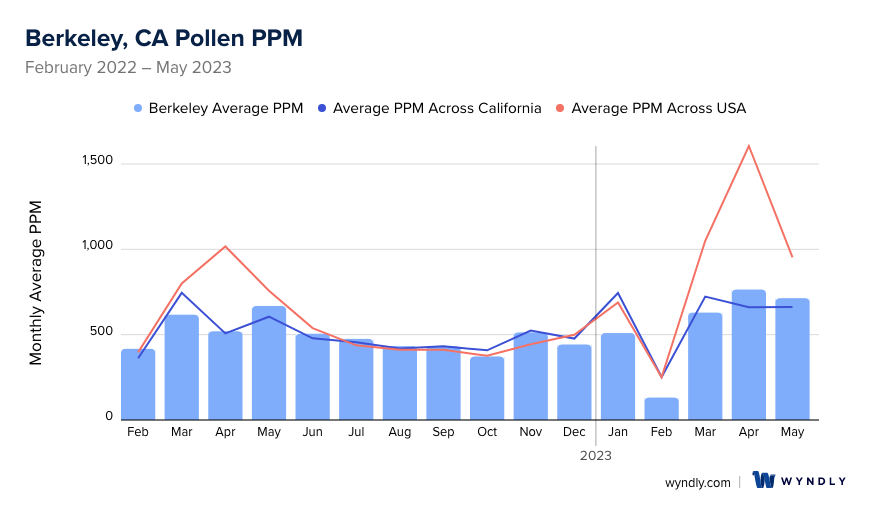
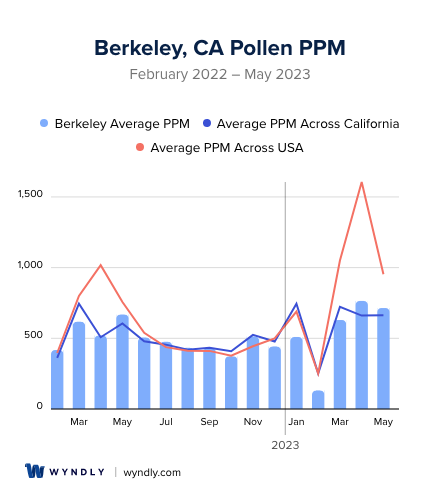
Berkeley, CA Pollen and Allergy Breakdown by Month
Grass
When is grass pollen highest in Berkeley, CA?
May has the highest grass pollen in Berkeley, CA with an average PPM of
When is grass pollen lowest in Berkeley, CA?
December has the lowest grass pollen in Berkeley, CA with an average PPM of
Tree
When is tree pollen highest in Berkeley, CA?
April has the highest tree pollen in Berkeley, CA with an average PPM of
When is tree pollen lowest in Berkeley, CA?
August has the lowest tree pollen in Berkeley, CA with an average PPM of
Weed
When is weed pollen highest in Berkeley, CA?
November has the highest weed pollen in Berkeley, CA with an average PPM of
When is weed pollen lowest in Berkeley, CA?
February has the lowest weed pollen in Berkeley, CA with an average PPM of
Berkeley, CA Pollen Monthly Breakdown by Pollen Type

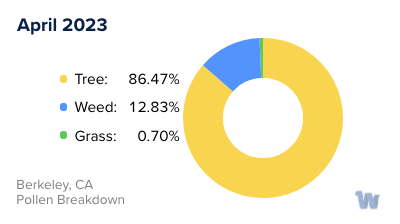

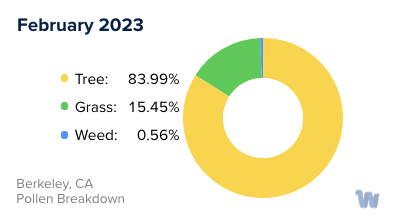

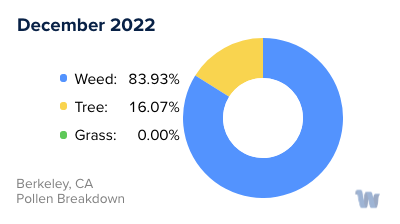
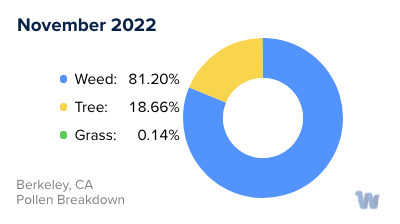

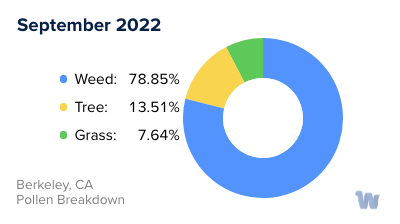
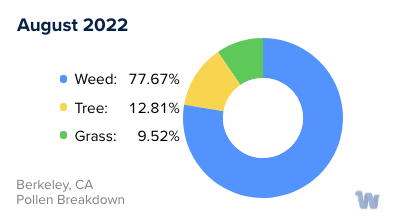
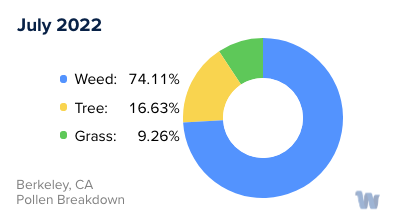

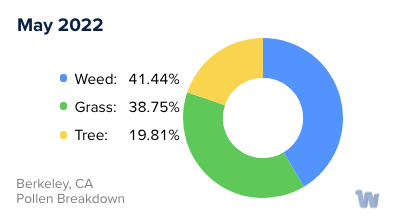

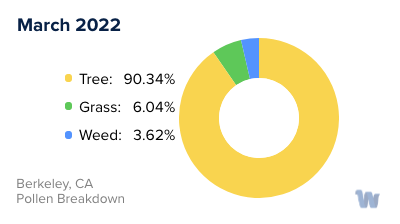

Pollen and Hay Fever in Berkeley, CA
Berkeley, California, known for its beautiful parks and tree-lined streets, is also home to a diverse array of pollen-producing plants. As a result, individuals living in Berkeley may experience pollen allergies, commonly known as hay fever. Understanding the types of pollen and the seasons when they are most prevalent can help residents better manage their symptoms.
In Berkeley, several types of pollen can trigger allergic reactions in susceptible individuals. Trees such as oak, cedar, pine, and birch are common sources of allergenic pollen. These trees release pollen into the air during the spring, typically from February to May, causing hay fever symptoms in many residents. Grasses, including Bermuda grass and Timothy grass, are also significant contributors to pollen allergies. Grass pollen levels tend to peak during late spring and summer, from May to July, exacerbating symptoms for those affected.
Apart from trees and grasses, weed pollen can also be problematic for hay fever sufferers in Berkeley. Ragweed, lamb's quarters, and sagebrush are common weeds that release pollen into the air during the late summer and fall months, from August to October. These allergenic pollens can cause considerable discomfort and trigger symptoms such as sneezing, itching, nasal congestion, and watery eyes.
Berkeley's mild climate, characterized by dry summers and wet winters, provides an environment conducive to the growth of various plants. This, coupled with the city's rich botanical diversity, contributes to a prolonged pollen season. Consequently, individuals with pollen allergies in Berkeley may experience symptoms for an extended period, starting as early as February with tree pollen and lasting through the fall due to weed pollen.
For residents of Berkeley, understanding the types of pollen and the corresponding seasons when they are most prevalent can help them anticipate and manage their hay fever symptoms effectively. While various treatments and remedies are available to alleviate symptoms, consulting a healthcare professional is recommended for personalized advice and guidance in managing pollen allergies.


